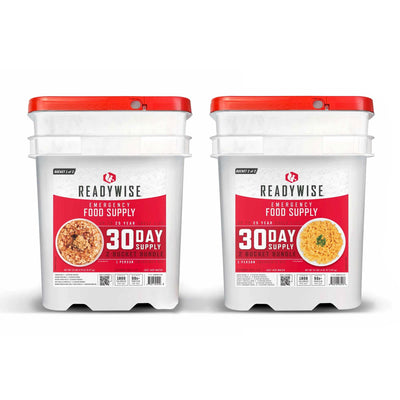Vegetarian MRE: Options, Storage, and Usage
Of the estimated 240 million adults 18 and older in the U.S., research indicates about 8 million are vegetarians, and of those, about one million are vegan. According to surveys, the needs of people interested in vegetarian meals differs, which can certainly also apply to vegetarian meals ready to eat. Some consumers may have preferences that include vegan, low-sodium, gluten-free, locally grown, organic, gourmet, kosher, etc. While there are more companies offering civilian vegetarian MRE options these days, they are not as numerous as what is available to the military. For somebody who has too many requests, such as those mentioned above, finding that perfect vegetarian MRE could be challenging.
A Lesson Learned From the Military
A military man recalls with some nostalgia how he was in U.S. Army basic training as an 18-year-old in 2004. Being out in the field, they were provided MREs, enough for a soldier to live on for at least 3 days. He said the food tasted horrible for the most part. While waiting in line with about 200 other soldiers, he noticed that many of them said, "I'm a Muslim," and the person handing out the rations would grab an MRE from a different box. When it was his turn, he declared that he was a Muslim and discovered why his fellow soldiers did this. The vegetarian/vegan MREs were actually tasty and the crown jewel of all MREs. The icing on the cake was that all of the non-meat MREs were guaranteed to contain a package of Jolly Ranchers, a sucking candy made to last a long time!
MREs are self-contained, individually packaged, and lightweight—traditionally used by the U.S. military in combat or other field conditions when food facilities are not available. The number of options have continuously increased and military personnel now have up to 24 entrées and more than 150 additional items from which to choose. The U.S. Army Natick Soldier Research, Development and Engineering Center (NSRDEC) is currently working on MRE solutions for NASA astronauts who will travel to Mars. They are seeking to expand the shelf life of these special MREs to a minimum of 5 years, and of course, have to also consider the issue of gravity when designing the packaging.
While civilians cannot purchase military MREs, after Hurricane Katrina, the interest grew and now there is a strong demand for MREs among the nonmilitary. In addition to being a perfect staple to stockpile as an emergency food, they are incredibly convenient for camping or to enjoy in the rugged wilderness—similar to their original purpose. They offer a little more sophistication than a can of beans and don’t require a can opener.
Shelf Life and Storage
The shelf lives of MREs are based on storage temperature, but in general, most products can last an average of 5 to 7 years or longer if kept in cooler conditions. Select a space that is cool, dark, and dry with a regulated temperature above 32 degrees and below 70 degrees Fahrenheit. If you are vegetarian, you might also consider freeze-dried vegetables that are available in an assortment of individual packets, with a shelf life of up to 25 years. Using MREs is simple—you open up the packets, warm them up if you wish, and dig in—bon appétit!
Sources: http://www.vrg.org/blog/2015/05/29/how-often-do-americans-eat-vegetarian-meals-and-how-many-adults-in-the-u-s-are-vegetarian-2/
http://www.theflamingvegan.com/view-post/Vegan-and-in-the-Military-Don-t-Ask-Don-t-Tell
http://www.mreinfo.com/civilian-mres/
https://www.army.mil/article/168406/Natick_s_food_packaging_processing_will_support_Mars_mission
















































































